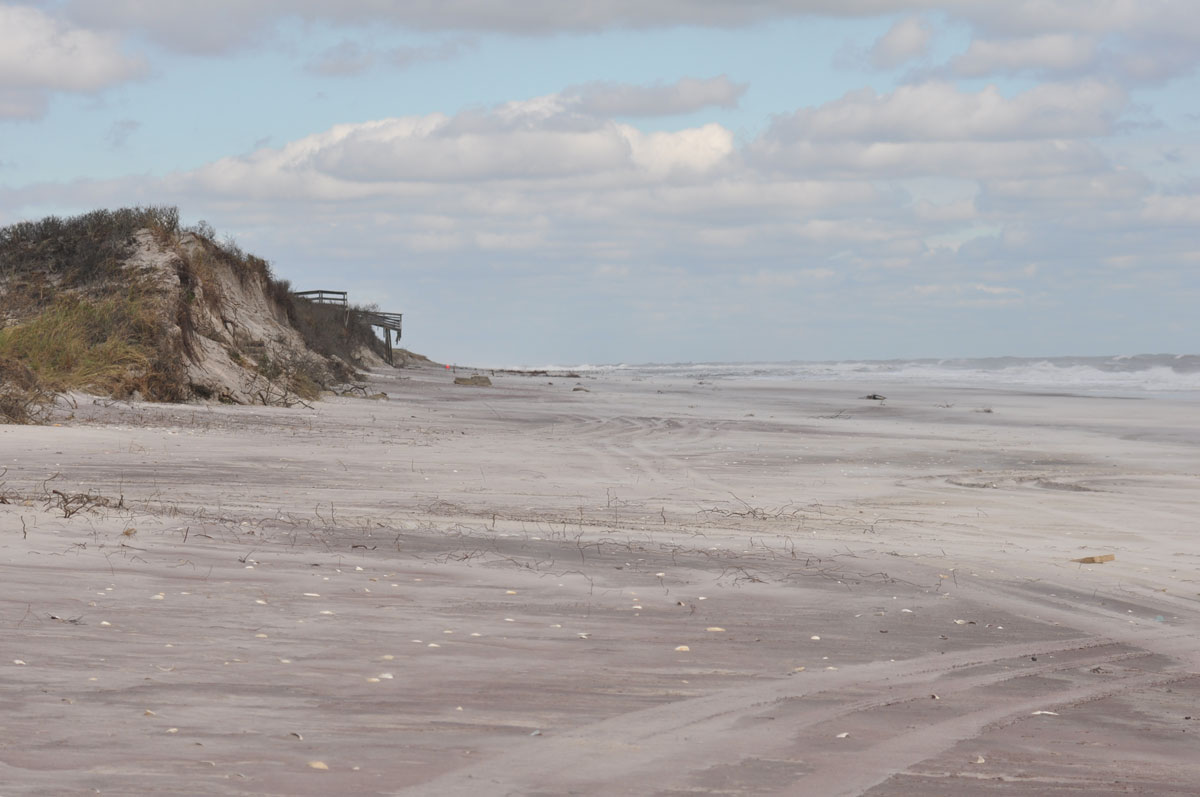Sandy Swept Away Half of Island's Sand

During Hurricane Sandy, more than half of the beach and dune sand disappeared from Fire Island, a barrier island off the southern coast of Long Island, N.Y.
Only 14 percent of that sand was washed inland, according to a study released today by the U.S. Geological Survey. Most of the sand was carried offshore.
Fire Island's beaches were about 10 feet (3 meters) lower and flatter after Hurricane Sandy, and its line of protective dunes eroded inland by as much as 118 feet (36 m), the study reports. Sandy's storm surge also breached the dunes in three places and damaged and destroyed homes and businesses on Fire Island, a popular summer vacation destination.
Several beaches along Fire Island now show signs of recovery, the study said. By mid-April 2013, 18 percent of the pre-Sandy sand volume had returned. "We surveyed the beach system again in June and we're seeing even more recovery," said Cheryl Hapke, a U.S. Geological Survey geologist and lead study author. [Jersey Shore: Before & After Hurricane Sandy]
But even with the replenishment from offshore sand, the beach volume still remains 40 percent lower than its pre-Sandy condition, the study finds.
Late-season storms like Hurricane Sandy, which hit Fire Island on Oct. 29, 2012, as a post-tropical cyclone, often move sand offshore, where it is "stored" as underwater sandbars, Hapke explained. In the spring and summer, waves bring the sand back to the beach.
Some of the missing sand may also have traveled down the coast, Hapke said. "In three to five years, it might start building out places like Jones Beach or Long Beach," Hapke told LiveScience, referring to beaches on barrier islands southwest of Fire Island.
Get the world’s most fascinating discoveries delivered straight to your inbox.
The rising beach elevation will help protect Fire Island from future storm surge, Hapke said, but the island's best defense are the decimated dunes, which are recovering more slowly. "In areas where the dunes weren't completely demolished, we have seen substantial sand start to pile up from the wind on those dunes," Hapke said. However, Hapke added, "Dunes take years to build back up, whereas beaches take a season. Wind is a longer process than one driven by water and waves."
As a barrier island— a long, narrow strip of sand — Fire Island bears the brunt of incoming storms. Barrier islands naturally migrate with changing sea levels, and Fire Island appeared to shift inland following Hurricane Sandy, the study found.
"The whole island was really profoundly changed," Hapke said. "Essentially what Sandy did is help to move Fire Island to where it will be more resilient to storms."
Email Becky Oskin or follow her @beckyoskin. Follow us @livescience, Facebook & Google+. Original article on Live Science.



